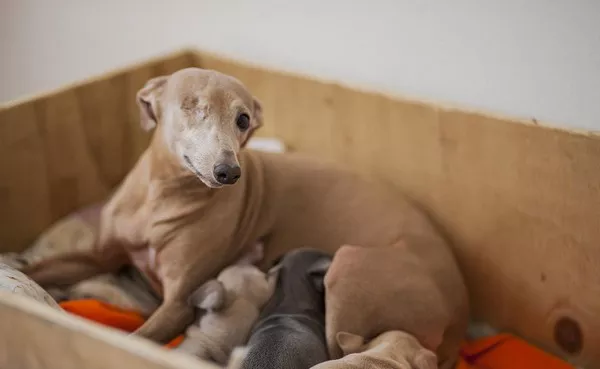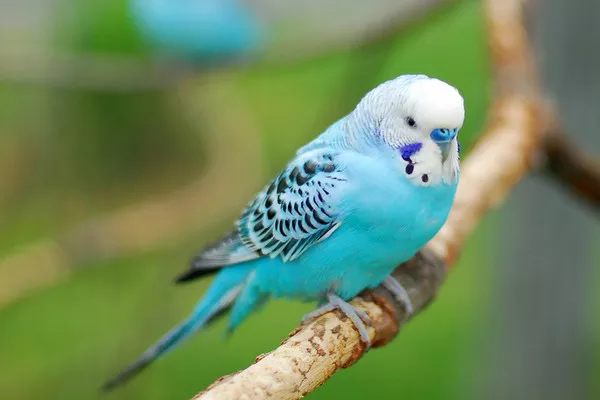The American Shorthair cat is one of the most beloved and well-known breeds of domestic cats, popular for its playful nature, affectionate demeanor, and adaptability to a variety of living environments. This breed, with its short coat, muscular build, and round face, is highly praised for being easy to care for, making it a great choice for families and individuals alike. One of the common questions many new or potential cat owners ask about their American Shorthair is, “How many kittens can an American Shorthair have?”
In this article, we will explore the factors influencing the number of kittens an American Shorthair can have, the typical kitten litter size, breeding cycles, and everything you need to know about the reproductive health of these wonderful felines. Whether you are a cat owner considering breeding your American Shorthair or just curious about the specifics of feline reproduction, this guide will provide you with the information you need.
Understanding the American Shorthair Breed
Before we dive into the specifics of kitten production, it’s important to understand a little about the breed itself. The American Shorthair is a medium to large-sized cat, known for its sturdy and athletic body. This breed was developed in the United States, primarily from European cats that were brought to North America in the early colonial days. Originally valued for their hunting abilities, especially in controlling rodent populations, American Shorthairs have evolved into one of the most popular companion cat breeds in the world.
American Shorthairs are typically affectionate and enjoy human companionship. They are not overly demanding of attention, but they enjoy being near their owners. Their independent yet gentle temperament makes them ideal pets for families, singles, and even other pets. These cats are known for their intelligence and curiosity, which can make them more interactive and playful compared to some other breeds.
Factors Affecting Litter Size
The number of kittens a cat can have in a single litter is influenced by several factors. For an American Shorthair, the breed’s genetics, the age of the cat, its health condition, whether the cat is a first-time mother, and the time of year all play significant roles in determining litter size. Let’s break down these factors more clearly.
1. Genetics and Lineage
Just like in any species, genetics play a crucial role in determining how many kittens a cat can have. Some cats are genetically predisposed to have larger litters, while others may have smaller ones. It is important to note that breeding from a healthy, well-documented lineage with good reproductive health tends to result in larger and healthier litters.
Breeders who specialize in American Shorthairs often have access to pedigrees and will carefully select mating pairs that have desirable genetic traits. If both parents are from a strong genetic pool, this can increase the likelihood of having a larger litter.
2. Age of the Cat
The age of a female cat is a significant factor in determining how many kittens she will have. Typically, a female cat reaches sexual maturity around six months of age, but the ideal age for breeding is between 1 and 3 years. During this period, a cat is most likely to have a healthy litter of kittens.
However, it is also possible for a cat to have a smaller litter if she is very young (under one year old) or if she is very old (over 5 years old). Female cats that are too young may not yet have fully developed their reproductive systems, leading to smaller or even unsuccessful litters. Likewise, older cats may experience a decline in fertility, which could result in fewer kittens being born.
3. Health and Nutrition
A cat’s overall health is a major influence on the size of her litter. A healthy, well-nourished cat will likely have more kittens compared to a malnourished or ill cat. When a female cat is in optimal health, her reproductive system functions more efficiently, allowing her to carry more kittens.
Proper nutrition is essential for fertility. Cats that are fed a balanced diet, with the appropriate levels of protein, vitamins, and minerals, will be more likely to conceive and have healthy pregnancies. Obesity or being underweight can also impact fertility, leading to smaller litters or difficulty getting pregnant.
4. First-time Mothers vs. Experienced Mothers
First-time mothers tend to have smaller litters. This is a normal part of the cat’s reproductive cycle. As a cat matures and has more litters, the size of her litters may increase or stabilize. An experienced mother who has already raised multiple litters is more likely to have a larger and healthier litter of kittens.
On the other hand, a first-time mother, or a “queen,” may give birth to fewer kittens as her body is still adapting to the birthing process. However, this doesn’t mean that her future litters will be small. As she continues to breed, her body will adjust, and her litter sizes may improve.
5. Season and Environmental Factors
Cats are seasonal breeders, which means that they are more likely to breed in certain times of the year. Typically, cats are in heat (estrus) in the warmer months, from spring to early autumn. During this time, cats are more fertile, and the chance of conception increases. However, environmental factors such as temperature, day length, and the presence of other cats in the area can all impact breeding success and litter size.
Indoor cats may experience less fluctuation in their reproductive cycles because they are protected from external weather changes, but outdoor cats tend to follow the natural seasonal patterns. It’s important for breeders to take these factors into consideration when planning a mating.
Typical Litter Size for an American Shorthair
On average, an American Shorthair can have between 3 to 6 kittens per litter. This is within the typical range for domestic cats, but it’s important to note that litters can be larger or smaller depending on the factors discussed above. Some litters may contain as few as one or two kittens, especially if it’s the cat’s first litter. On the other hand, a seasoned mother could have a litter of 7 or 8 kittens, or even more in rare cases.
The size of the litter is also influenced by the health of the queen and the quality of care she receives during her pregnancy. Well-cared-for American Shorthair cats that are bred at the optimal time are more likely to have litters that fall within the 4-6 kitten range, which is typical for most breeds.
How Many Litters Can an American Shorthair Have in a Year?
Cats are capable of having multiple litters per year, and it is not uncommon for a healthy female to breed every 6-8 months. However, it is important to note that continuous breeding without allowing the cat adequate rest can be harmful to her health. The general recommendation for responsible breeders is to allow a female cat to have no more than 1 to 2 litters per year, with sufficient time in between to allow her body to recover.
It is essential to keep the queen’s health in mind and avoid overbreeding, as too many pregnancies in a short amount of time can take a toll on the cat’s physical well-being and lead to complications in future pregnancies.
The Birthing Process
Once an American Shorthair cat is pregnant, her owner should closely monitor her for signs of labor. Pregnancy in cats typically lasts around 63 to 65 days, or roughly 9 weeks. As the cat nears labor, she may show signs of restlessness, nesting behavior, and changes in appetite.
During labor, the mother cat will typically find a quiet and safe space to give birth. It is important that the cat has a clean, comfortable environment where she feels secure. If you are breeding your American Shorthair, it’s important to prepare a birthing box for her, lined with clean towels, where she can give birth in privacy.
The process of giving birth is relatively quick, and most cats can deliver their kittens without human intervention. The queen will instinctively clean her kittens after birth, and they will begin nursing right away. Kittens are born blind and helpless, relying on their mother for warmth, food, and care.
Post-Birth Care and Raising Kittens
After the kittens are born, the mother cat will continue to care for them, ensuring that they are properly fed and kept warm. The mother’s milk provides essential nutrients and antibodies to the kittens, which help them build a strong immune system.
As the kittens grow, they will start to open their eyes at around 7 to 10 days of age and begin to explore their surroundings. By the time they are 4 weeks old, they will begin eating solid food in addition to nursing. At around 8 weeks, the kittens are usually ready to be adopted into their new homes.
It’s essential to provide the mother and kittens with a quiet, safe environment free from disturbances during the first few weeks of life. Regular veterinary check-ups are also recommended to ensure the health of both the mother and the kittens.
Conclusion
The number of kittens an American Shorthair can have varies depending on a variety of factors, including genetics, age, health, and the timing of breeding. On average, American Shorthairs have between 3 to 6 kittens per litter, although it is possible for litters to be smaller or larger. By taking proper care of the queen and providing a suitable environment for breeding, responsible breeders can help ensure that the kittens are born healthy and ready to thrive.
Whether you are a cat owner or a breeder, understanding these factors will help you appreciate the complexities of feline reproduction and the responsibility that comes with breeding and caring for a cat.
Related Topics:
























